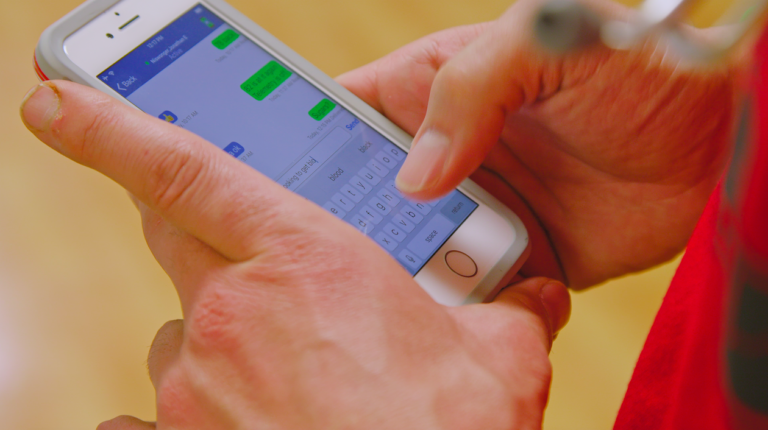So you’ve been hearing that smartphones are here to stay, and maybe you’ve had enough of running around, receiving outdated care-team information and searching for the right person to contact at the right time. The communication and collaboration workflows in your clinical facility are fragmented and lacking interoperability. Something needs to change. It’s time to invest in a clinical communication tool, but which one?
It’s easy to become overwhelmed by the options. Do you opt for an all-in-one platform, a hands-free device, or just a simple texting app through your EHR? Each option may have their virtues, but in order to find out what’s going to deliver real results for your hospital, you need to look at the data. Here are some important metrics to consider when you’re looking for a clinical communication tool.
1. You Can Reach Anyone, Anywhere
A truly effective communication system needs to be scalable so that everyone within an organization can be reached. This means that nursing or physician-only communication solutions, or tools that only work when they’re in a facility, fall far from creating a truly effective communication network. Operational staff is often overlooked during the process of implementing a CC&C platform. This is a mistake—many clinicians need to collaborate with operational staff several times each day, whether it’s a request to clean a patient room or to drop off a tissue sample at the lab. Even patient transport can see a huge benefit from inclusion in an enterprise-scale communication solution.
Couple widespread use with dynamic, collaborative features, and you’ll have a tool that enables you and your team to contact any hospital employee, no matter who or where they are.
2. There’s Widespread Adoption
Basically, implementing a device across an entire health enterprise doesn’t mean much if people aren’t actually using it every day. If clinicians find the tool valuable, they’re likely to use it on a regular basis, and that kind of value is demonstrated in a metric called active users. A communication tool might have a bunch of registered users, but if only a few are actually using it consistently, it probably isn’t the right tool for your system.
One way to make sure your solution meets this criterion is to determine whether there’s the potential to scale both vertically and horizontally throughout the organization. By leveraging integrations with a tool you can put into every employee’s hands, a clinical communication platform can become the single unified source of information for clinicians.
3. It Integrates With Your Existing Infrastructure
There are so many different systems a hospital can have to make up its technological infrastructure, from the telephony system to the wireless network to the EHR. Every vendor of these systems operates a little differently, so you want a clinical communication tool that will play nice with all of your other vendors.
What you want is a technology-agnostic solution. Your clinical communication platform should be able to integrate with as many different vendors as possible in order to provide hospital staff with the most flexible and comprehensive tool possible. A truly technology-agnostic platform will include a robust suite of APIs that enable clinician mobility in a variety of ways: access to real-time care team directories, delivery of critical alerts and alarms, the ability to customize the interface in order to launch to other clinical apps and reference materials, and more. This information should be available to clinicians at the point of care—the palm of their hand—and the way it gets there is by interoperating with other vendors.
4. It’s Reliable and Easy to Use
It seems obvious, but there’s no use implementing a tool that no one can successfully use. Physicians are increasingly feeling bogged down by the hassle that some EHR interfaces have, so make sure you find a platform with a clean and straightforward design, one that users will find intuitive. This can cut down on the number of problems you may have regarding training users and having to file support tickets relating to employee education. An intuitive platform makes for a smoother implementation for everyone.
Beyond everyday use, your communication and collaboration platform should operate like a utility—when you need it, it’s available and working. Some CC&C tools require being brought offline for upgrades, which means your staff has to revert to manual or analog methods of reaching each other. These upgrades can take hours, and usually spell a huge headache for technology and clinical teams alike. For this reason, you should select a platform that requires zero downtime for maintenance and upgrades. That way your team can continue to provide quick, quiet and efficient patient care.
5. It Provides Actionable Data to Drive Improvement
Data analytics is a growing concern among CIOs and CNIOs and with good reason. It’s clear to see that collecting workflow data in your enterprise can help you identify areas to streamline and save costs. But all of that data isn’t helpful unless you have the means to analyze and draw conclusions from it. For that reason, make sure you select a solution that not only targets and measures key communication metrics, but also offers expert context and insight to help you get real, actionable results.
Your clinical communication and collaboration platform should include a team of engineers, project managers and clinical informaticists to partner with you in the transformation to successful, efficient, effective communication and information. The data your dedicated team collects should tell the whole picture in order to identify opportunities for increased efficiency. You’ll know your clinical communication team is doing great work when they can prove your enterprise’s ROI based on data trends.
When it comes to selecting a CC&C tool for your hospital, there are innumerable factors to consider, but it’s important to select the solution that will provide the greatest benefit to the enterprise. This means implementing a tool that will enhance communication at every level in order to save time, money and lives. For more key considerations of a CC&C solution, download the white paper here.




